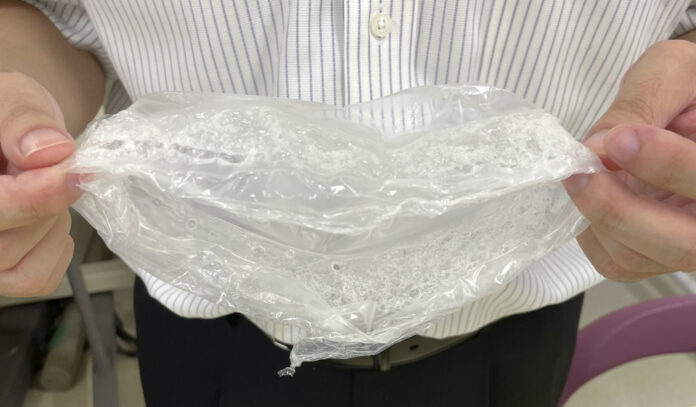
KOBE – A team of Japanese researchers said Wednesday it has developed a new bioplastic that is not only durable but degrades rapidly in seawater and can be mass produced.
The research by scientists at Kobe University and other organizations fuels hopes that the world’s oceans may one day be cleared of plastic waste.
According to the Organization for Economic Cooperation and Development, there was about 30 million tons of such waste in the sea in 2022.
The new bioplastic is made from polylactic acid, a kind of polyester that is derived from starches such as sugarcane and corn, according to the team’s report in the U.S. science journal ACS Sustainable Chemistry and Engineering.
Polylactic acid, also known as polylactide, has attracted attention as an alternative material to petroleum-based plastics, but the material is brittle and difficult to mold and dissolve.
A type of polylactide with enhanced degradability, known as LAHB, has already been developed, but it is difficult to produce in bulk.

To address such shortcomings, the team utilized a bacteria known as lactate dehydrogenase capable of producing plastic, and through its genetic modification, the team managed to mass-produce LAHB.
LAHB by itself is cloudy white in color, but the team achieved a typical transparent appearance by adding a small amount of LAHB to conventional polylactic acid.
The Japanese government hopes to increase the country’s use of bioplastics to approximately 2 million tons by 2030.
Seiichi Taguchi, a Kobe University professor on the team, said the new bioplastic’s development “will help deter global warming, and has brought the government’s biomanufacturing initiative to an industrial level.”















































